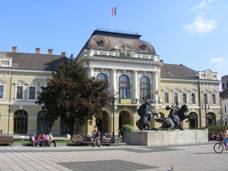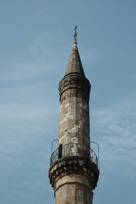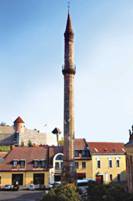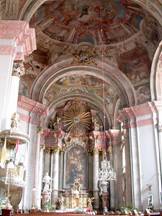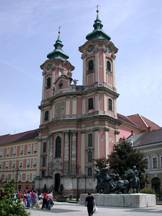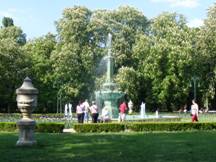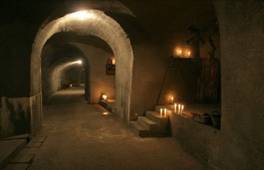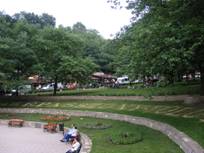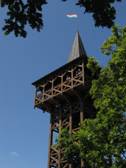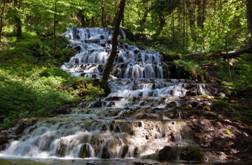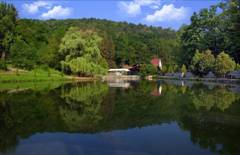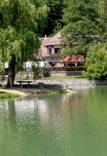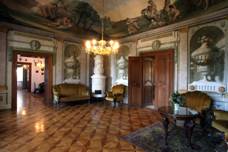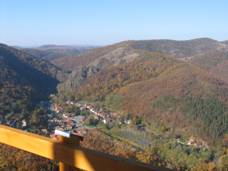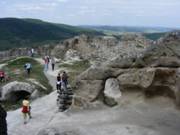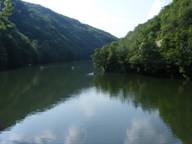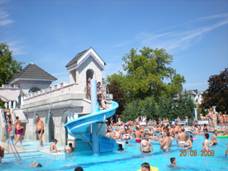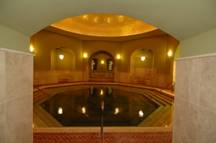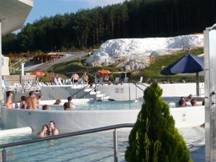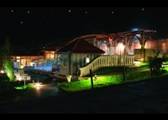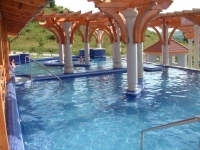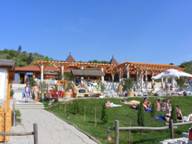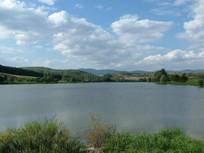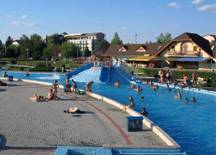
Sightseeing in Eger and the surroundings
Castle Eger
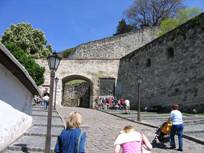 |
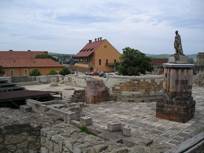 |
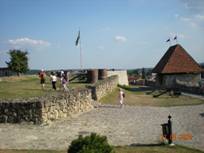
The Castle of Eger with the Istvan Dobó Castle museum inside is amongst the most visited and most well-known monuments in Hungary. Its popularity can be attributed to the fact that this former border castle is among the most complete ones in Hungary.
The building of the castle was started after the Mongol invasion and, although it kept a strategic role in more recent centuries, it won its true fame in 1552 when 2,000 heroic people under the lead of captain Dobó fought off the besieging Turkish army of many tens of thousands. The castle and its valiant soldiers became legendary when Géza Gárdonyi wrote his novel titled 'Eclipse of the Crescent Moon' ('Egri csillagok') in the 20th century. This book was voted the most popular novel in a Hungarian TV show in 2006. The writer was buried in the castle. http://www.egrivar.hu/en/
The historical musical 'Eclipse of the Crescent Moon' is played every August in the Castle.In the Eger Fortress there is the Dobó István Castle Museum. The exhibitions show the history of the castle, the underground fortress system and the medieval ways of punishment and their equipments.
Basilika
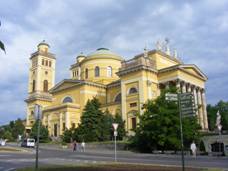 |
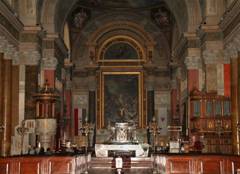 |
One of the biggest churches of Hungary, the Cathedral of Eger was built between 1831 and 36 in classical style. The length of the church is 93 metres, the width 53 metres, while the towers arising next to the sanctuary are 54 metres high. A wide staircase is leading to the main entrance of the Cathedral. On both sides there are stone sculptures of Marco Casagrande. The cathedral houses the biggest organ of Hungary that was built at the end of the XIX. century by Ludwig Moser from Salzburg. During high season (15 May – 15 October) visitors can hear an organ presentation here.
Lyceum
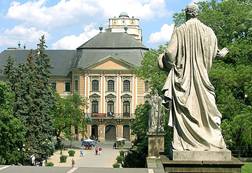 |
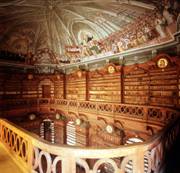 |
The impressive building of the Lyceum was built in late Baroque style. Now it works as a college.
It was built at the end of the 18th century by Count Eszterházy Károly, to serve as a university. The famous diocesan library on the first floor, open to visitors, preserves old codices, manuscripts and the only original letter by Mozart in Hungary. Besides visiting the Astronomical Museum and the “Specula” periscope operating in the tower we can do scientific experiments in the “magic tower”. Here you can find also the third working planetarium.Dobó Square
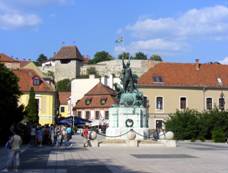
Dobo square is the elegant center of the city. Sitting in the center of the large tiled section of the square is Captain Dobo himself, while off to the side, in front of the town hall, the statue of a group of border-castle soldiers is to be found. On the other side of the bridge, in the cozy, shaded snug, are a number of pleasant cafes and, occasionally, market stalls.
Minarett
The most northern monument in Europe from the time of the Turkish occupation the minaret is built out of carved sandstone. The djami on its east side was dismantled in 1841 in the course of the city replanning.
With a 14-sided ground plan this tower is 40 metres high. Inside its tall trunk 97 winding steps lead up to the iron balustraded circular terrace. The stone cone on the very top of the minaret is ornamented with a crescent moon and a cross. Since 1997, some 350 years after the legendary battle, the sound of the muezzin calling is once again heard in a summer event series.
Of the three minarets remaining in Hungary this is the tallest and the best preserved one.The Minorita church
The main point of interest of the Dobó square is the former Minorite Church, one of the most beautiful Baroque churches in Central Europe. The church and the decorations both outside and inside are considered to be one of the most beautiful creation of mature Baroque art. Carillon is played from the church every day at 11:00, 15:00 and 18:00.
Fazola gate
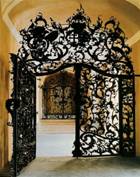
The wrought iron gate is the gem of the County Hall, an outstandingly rich, high standard and prestigious example of the Hungarian wrought iron art. The semi-circular top section above the gate itself, decorated with the allegoric figures of Faith, Hope and Love, along with the gate were made by Henrik Fazola between 1758 and 1761.The Bishop’s park
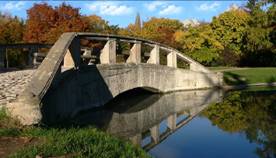
The largest park in Eger, with sport facilities, a small lake, and a fountain.
The park is a fine example of French landscape gardening. It is well worth wandering around in the park; its trees, bridges and small groves are stunning at any time of the year. The Liget Casino is located in the middle of the Bishop's Garden next to one of the city's biggest sports centres and indoor sports halls.City under the city - former archbishopric wine-cellar-system
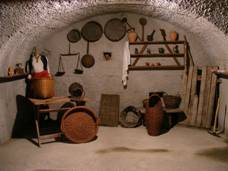
György Fenessy, the bishop in Eger, as he returned in 1688 to Eger after the march out of the Turks, he didn't want to leave in the Castle. He buys in the town two building grounds and necessary the tuff-stone the extracted from the hillside behind the palace. So they achieved double result: the palace was finished and directly below it a wine-cellar-system, where they stored the 10% tithe of the wines what from Gyöngyös to Munkačevo (today Ukraine) grew, it was in year 11-12 million liters. The wine-cellar-system run in 3 km (1,85 miles) from the Hatvani to the Rác Gate. Today is the nicest part the Column Hall.
The cellar was not used after the nationalization in 1947, its condition sank and it became dangerous. They strengthened it with steel-concrete on the end of the 70-es, the very dangerous parts were closed up. But they made a great mistake: the concrete would not be water-proofed, so the water pans the lime from the tuff-stone and creates wonderful dripstone formations.
Eger wanted to utilize the cellar-system in the competition Europe's Cultural Capital 2010. Today it's a part of the National Development Plan, and we have the chance to realise the project. Tourists can get acquainted today on the surface with the town what was built after the Turks. The history of the town will be presented here from 1004 (establishment of the bishopric) till 1687 (the march out of the Turks).
The wine-cellar-system got in January 2007. into the 21 wonders of Hungary.Eger wine region
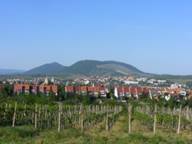 |
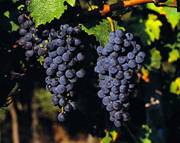 |
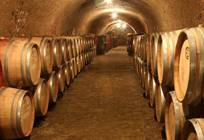
Beside its historic sights and its thermal baths, Eger is famous for its wines. In fact, it produces both red and white wines of high quality.
The residents have been involved in grape and wine production for almost a thousand years, producing such excellent wines as Egri Bikavér, Egri Leányka, Debrői Hárslevelű, Egri Chardonnay, Egri Cabernet Franc and Sauvignon, Egri Merlot, Egri Kékfrankos and Kékmedoc. After the change of regime, the Eger wine region went through an extraordinarily fast development. Through the re-planting of the traditional and new types in the best production areas, the area of the vine-lands has grown significantlyThe “Valley of beautiful Woman” (Szépasszony-völgy), with some 200 cellars, has been connected with the fame of Eger wines for centuries.
The gem of Szépasszony-völgy are really the hundreds-year-old cellars that have been carved into the several hundred-meter thick rolite tufa. This material can be formed perfectly, and can permanently maintain wine at a temperature of 10-15°C. Varying amounts of mosses and noble mold found in the cellars give each carved cave a unique atmosphere, and help the mellowing of the wine and the formation of its fragrance.
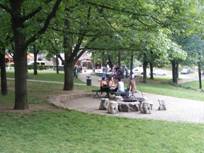
Surroundings
Bükk-National parkThe largest mountainous forested national park in Hungary, its establishment was determined by the geographical conditions of the Bükk Hills after which it is named.
The whole area of the national park can be visited on the signed footpaths, but entering into the habitat of some species may be restricted by the management of the Bükk National Park.
The park management would like to encourage cyclists next to walkers by establishing a network of bicycle paths and providing bicycle rental at Szilvásvárad.The area of the park is 43,200 hectares from which 97 % is covered with forests.There are several unique and rare wildlife species in the mountains and more than 900 caves are known.
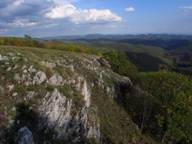 |
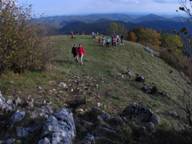 |
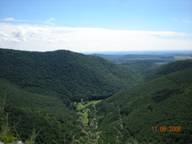 |
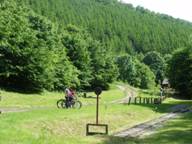 |
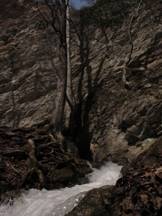
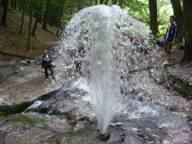
Felsőtárkány
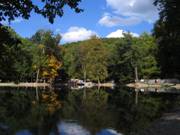 |
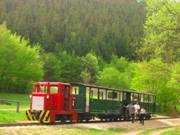 |
Felsőtárkány is the gate to the Bükk. From the top of the hill near the village there is a beautiful view to the Bükk and the village.
Felsőtárkány National Forest Railway is a 5 kilometers long railway line. It operates regularly between 1 May and 30 September.Szilvásvárad
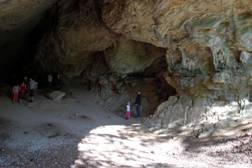
Szilvásvárad lies 25 km North of Eger, on the Western part of the Bükk Mountains in Hungary. This little mountain-village - which has very long past - is situated in wonderful surroundings and offers to visitors a lot of kind of accommodation. It is a well-known international holiday resort perfect for relaxing European vacation. The Szalajka-valley is part of the National Park of Bükk Mountains, nature conservation area. Main sights: the picturesque Szalajka-valley, Veil-waterfall, Rock-spring, Open-air Museum which is unique in Europe, a Game Preserve, Caveman’s Cave, Stock farm of trout, Fish Lakes, Narrow-gauge Railway. In the village - which has about 2.800 inhabitants - the world-famous Lippizaner stud are bred. The Lippizaner horses have more then 400 years long history. In whole year colourful programs are tempting here the tourists for some relaxation, sport, amusement and people who simply wish to have an excursion. Horse programs, shows and carriage trips make complete the fun facilities. The lovers of horse riding have a chance to discover the country side on horseback, while children can ride on a pony.
This place is a paradise of nature lovers too. You can get yourself familiar with the nature, the local culture, handicrafts and the tradition of horse-breeding in interesting special museums. Apart from he horse sport, one can try mountain bicycle tour, cave tour, rock climbing, hiking, archery and a mountain tour with a qualified guide. In every year several-day horse festivals attract thousands of people here. A “new tradition” in the village is the grape harvest festival in autumn.
Noszvaj
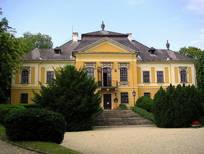
Noszvaj was one of the villages belonging to the Eger bishopric as early as 1248 and is only 12 kilometres away from Eger, situated next to the Bükk National Park, on the gentle southern slope of the Bükk mountains. Visitors are attracted by the picturesque scenery, the clean air, and last but not least the village's own baroque-style castle.The late baroque-style castle, a miniature masterpiece of Hungarian castle architecture, was built between 1774 and 1778.
This tiny village has some interesting festival and event.
The Plum Festival is is held usually end of August. You can watch how to make the traditional plum jam as our ancestors, grandmothers and grand-grandmothers did many years ago.
But do not stand on the side, you can learn it, taste it, buy it. And not only plum, but other fruit jams as well, as those are organic, traditional and very tasty jams.
And you can taste not only jams, but traditional cookies, cakes, and while you are choosing another, watch the folklore dance shows or get a glass of local wine.As Noszvaj is part of the Eger wine region, the wines are fantasic here, mainly red wines, but dry whites as well. Visit the most famous local winemaker, Thummerer. He had a large cellar at the end of the village.
Szarvaskő
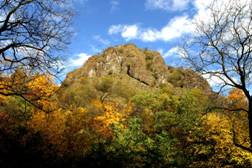
A castle, a church, tunnels, rocks and lots of geological and botanical sights - that is Szarvaskő. On the 446 m high volcanic Keselyűbérc hill you can see the ruins of a castle built at the end of the 1200s. . Szarvaskő is a popular excursion spot 10 km from Eger, it is easily accessible by car, bus or train. The most picturesque railway line of Hungary - which is around a hundred years old - runs through two little tunnels under Vár hill.
Bélapátfalva
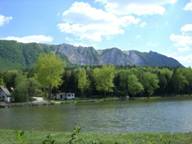 |
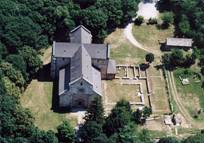 |
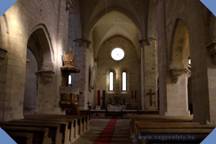
Bélapátfalva is situated in the western part of the Bükk, on the foot of the Bélkő mountains. About one hundred million years ago the rocks of the white mountain have emerged from the disappearing ancient sea.
The abbey was founded by the bishop of Eger (II. Kilit) in 1232 for the Cistercian monks, who settled here from France. The Romanesque style church of the abbey is an internationally recorded historical monument. The old Romanesque stlye church was rebuilt in the XIV-XV. century in Gothic style. The former monastic quarters next to the church was destroyed during the XVI. century and only some ruins remain.
Burg in Sirok
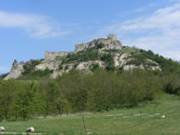
Sirok is a small historic village at the north-eastern foot of the Matra Hills famous for its fortress. The fortress was built before 1320 at a height of 276 m above the village. Both the wall sections of the lower castle and the castle well can be seen and there is a passage carved into the rocks, leading to the upper castle.
Lillafüred
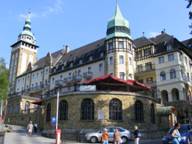
Lillafüred lies in a picturesque valley in the eastern part of the Bükk hills.
The artificial lake was formed in the early 19th century by the damming of the water of Szinva and Garadna, to supply the iron furnace with water. The lake is 1.5 kilometres long. In the summer, boats and paddle boats can be rented.
There are three natural caves here open for tourists, and here you can see the highest waterfall in Hungary.
The palace hotel is built between 1927 and 1930. A hanging garden and a park surround it and the tower offers a fabulous view over the Szinva valley and Lake Hámor.
Thermal bath and Spa
Eger’s Thermal Bath complex
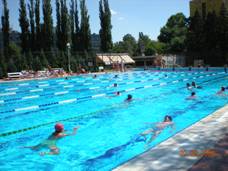
Eger’s Thermal Bath complex is situated in the town centre on a site covering some 12 acres, alongside the Turkish Bath which dates form the sixteenth century. Visitors are able to enjoy bathing in two types of medicinal water. The cascade pool provides the opportunity of experiencing the wholesome massage effect of the gushing water. The up-to-date water surface pool is perfect for a relaxing swim.
The adventure pool provides 14 different water entertainments such as: bubble bath, bubble bed, underwater massage, waterfall. The adventure pool with its water circulating system is very popular among children. The bubble bath, the spring, the side ans the waterfall of the water-castle contribute to a wonderful experience.Turkish Bath
A unique feature in the northern region and a rare phenomenon on international scales as well, the Turkish Bath reopened its doors to welcome visitors in late 2009. Five further pools (‘ilidzsa’), saunas, massage, a steam bath and a hammam (traditional Turkish steam bath)
have been added to the original Turkish pool from the early 1600’s. Besides these, the resting areas with their aesthetic elements and pleasant lightning make the Turkish feeling even more real.
In summer, access to the grounds of the Lido and Thermal Bath is made available through a walkway.
Besides the entertainment and relaxation facilities, visitors of the Turkish Bath can enjoy the benefits of the therapeutic services as well.Egerszalók Spa and Wellness Bath
Welcome to the Salt Hill Spa and Wellness Bath of Egerszalok, the newest and one of the most modern thermal spa resorts in Europe. Located only 6 kilometers outside of Eger and 120 kilometers from Budapest, the spa and wellness complex is surrounded by a natural environment unmatched in Europe. The thermal waters streaming down the hillside have formed layers of limestone and travertine which accumulate into a beautiful salt hill, a natural wonder found only in two other locations in the world. The spa's thermal baths and wellness center are located at the base of the salt hill enclaved by Egerszalok's vast forest, allowing visitors to be truly at one with nature.
Thermal spring water is considered one of the most important natural remedies available to mankind. Half of the 17 indoor and outdoor swimming pools include high quality calcium-magnesium-hydrogen-carbonate thermal water, rich in minerals essential to the human body. The other half of the pools include whirlpools, wave and river pools, children's pools with water slides, and numerous massage pools catering to all ages, from infants to the elderly alike.Demjén Thermál-valley
In Demjén's Hegyeskő-valley, the well was established in 2006, followed by the building of the thermal bath. The therapeutic water streaming from a depth of 690 meters, with 68 °C temperature is the country's most recently explored thermal water. According to the examinations, the thermal water has sodium-calcium-hydrogen-carbonate content, with hard fluoride and sulphur in addition to substantial iron and silica content.
Sulphur builds into tissues without circulation, such as the cartilages and joints. Sulphurous bath therapy is particularly recommended for joint injury and arthritic conditions.
Sulphur, entering the body, expands arteries and vanes, facilitating the cardiac circulation. In addition the bath therapy can be applied to alleviate rheumatic pain, to ameliorate degenerative alterations of joints, to treat osteoporosis and rheumatic gout, bone injuries, and follow up therapy of orthopaedic surgeries. It improves circulation and movement, but it also have benevolent effects on the skin's sebaceous glands and the skin's inflammatory conditions.
Calcium and magnesium has substantial biological effects. Calcium alleviates inflammation, while magnesium increases the body's stress tolerance.
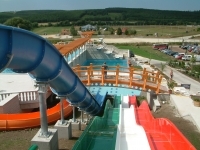
Cave Bath Miskolctapolca
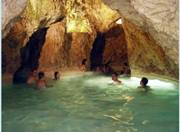 |
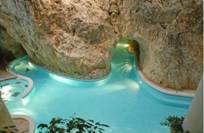 |
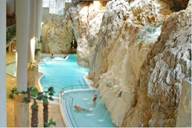
You may refresh you self in an exotic bath, if you visit the famous spa of Miskolctapolca. The unusual thermal cave bath is unique all around Europe. Besides the natural cave bath there are indoor and outdoor pools, an aqua park, thermal pools and a small pool for the children. The water here contains calcium, magnesium-hydrogen-carbonic, iodine, bromide and radon. Thus the spa is recommended for those who have motor disorders, rheum’s, some backbone problems, or heart and blood system disease. Besides the healing bath, different kinds of treatments are available, like massages, mud-pack, therapeutic gymnastics, sauna, solarium, etc.
Bogács
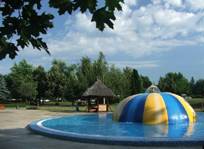
The town of Bogács is situated at the feet of Bükk-mountain range, in the valley of the Hór and Szoros streams, which became a popular leisure site in the past couple of years. The 76 Celsius degree thermal waters, which were discovered by deep drilling from 480 meter deep wells gained the town of Bogács well deserved reputation.
The operation of the thermal bath is based on this natural resource, the open air pools are available to visitors during the Winter and Summer season in the cherished and popular, calm environment.
In the area of the spa complex three thermal water pools (36-38Celsius degrees), two therapeutic pools (36-38Celsius degrees), a children's pool (30Celsius degrees), and a clear surface swimming pool (24Celsius degrees) is at the visitors' disposal. The hot water pools operate throughout the year, the swimming pool and children's pool operate from May 16 to September 15.Mezőkövesd
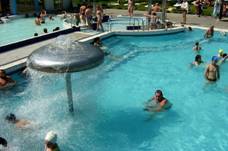
The attractiveness of Mezőkövesd is based not only on the matyó roots, but also on the more than 70 years old Zsóry Thermal Bath and Spa. The state started drillings for petroleum on its land, but instead of it thermal water rushed up that was officially declared to be medicinal water in 1968. Its 72 C° water has the highest sulphur content among all the medicinal waters of Hungary. It is mentioned among the first three thermal bath of Hungary due to its excellent efficiency.
The adventure pool equipped with neck-massage and bubble bath waits for people who wish to relax. You can swim into this pool from the building of the indoor swimming pool (27 C°) and medicinal pools (33-40 C°). Adventure elements (slide, drifting corridor, waterfalls) and wave-bath (22-24 C°) enrich the refreshing water of the circle-pool that is 100 in diameter. Children can splash in the open-air and indoor children’s pool while the parents can use the wellness section or can ask for a medical or refreshing massage.
